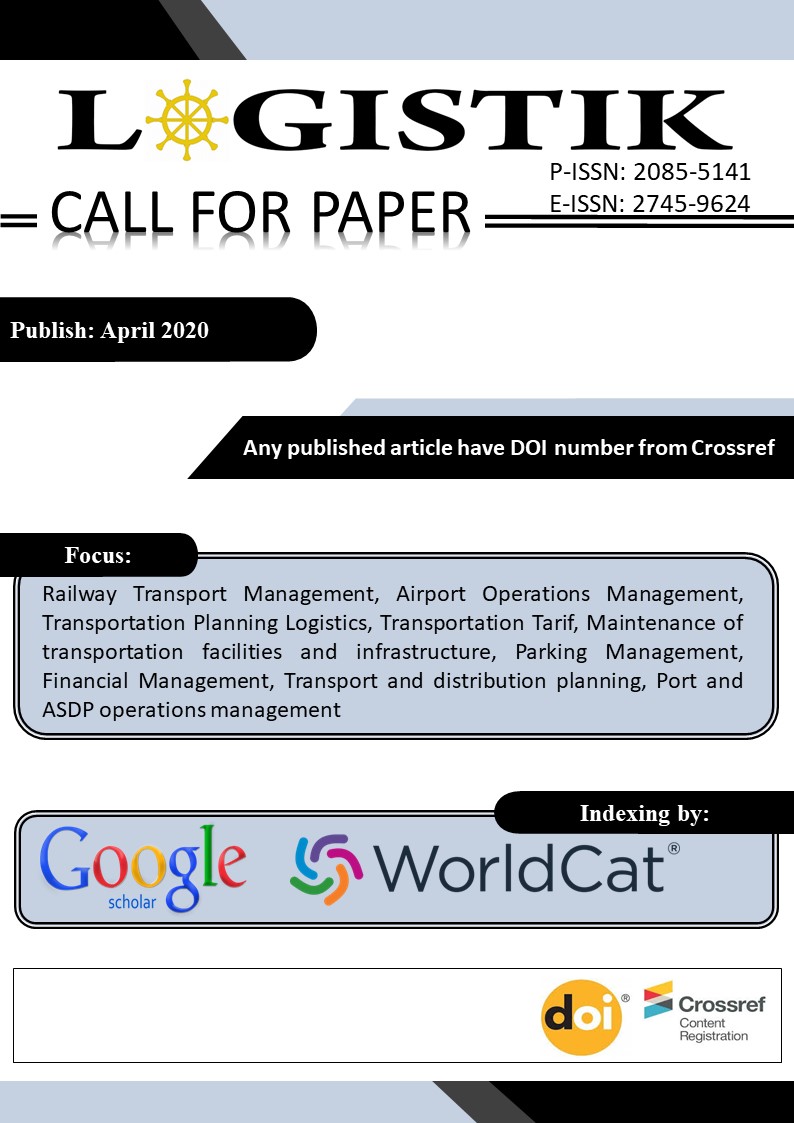ANALISIS TRUCK ROUND TIME DI LAPANGAN IMPOR DALAM KEGIATAN DELIVERY DI PT. MUSTIKA ALAM LESTARI
DOI:
https://doi.org/10.21009/logistik.v13i1.17656Keywords:
Truck round time, Delivery, Yard Occupancy RatioAbstract
asically, in a activity delivery, the consignee submits SP2 (Container Withdrawal Letter) at the gate, then if it is not in accordance with SP2, it is returned to the consignee, if appropriate, the carried out gate in transaction is, then the consignee can immediately receive the container according to the stacking location listed on SP2 This is intended so that the consignee can quickly dispense the container from the stacking field and the truck does not need to be lingering in the container terminal. The optimal time required for adequate service, fast service levels greatly affect the optimal Truck Round Time inactivities delivery. The faster the Round Time Truck, the more optimal process delivery and vice versa, from observations, the authors found a problem that one of the containers to be taken by the consignee was not in accordance with the location listed in SP2 because it had undergone a change in position that was not updated by field officers and high delivery and activities chunk of the ship. At the end of this paper, the authors conclude several dominant factors causing the length of time needed by the consignee to take the container, namely the lack of discipline of field officers to renew the latest container position, the height of Yard Occupancy Ratio (YOR) and concurrently the time of activities delivery with time off from the ship. In addition, the author also included a number of suggestions to the terminal on the factors that slowed activities delivery. It is expected that this suggestion can be useful for improvement of the conditions that already exist today.
Downloads
Published
Issue
Section
License
Authors who publish with this Journal agree to the following terms:
- Author retain copyright and grant the journal right of first publication with the work simultaneously licensed under a creative commons attribution licensethat allow others to share the work within an acknowledgement of the work’s authorship and initial publication of this journal.
- Authors are able to enter into separate, additional contractual arrangementfor the non-exclusive distribution of the journal’s published version of the work (e.g. acknowledgement of its initial publication in this journal).
- Authors are permitted and encouraged to post their work online(e.g. in institutional repositories or on their websites) prior to and during the submission process, as it can lead to productive exchanges, as well as earlier and greater citation of published works.
-
Users/public use of this website will be licensed to CC BY-NC-SA Creative Commons Attribution-NonCommercial-ShareAlike 4.0 International License








